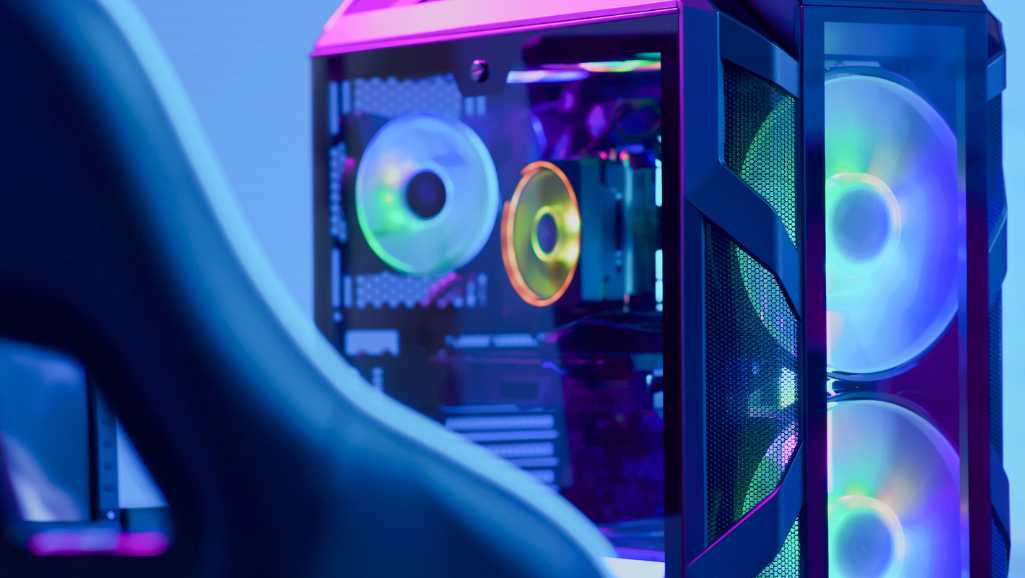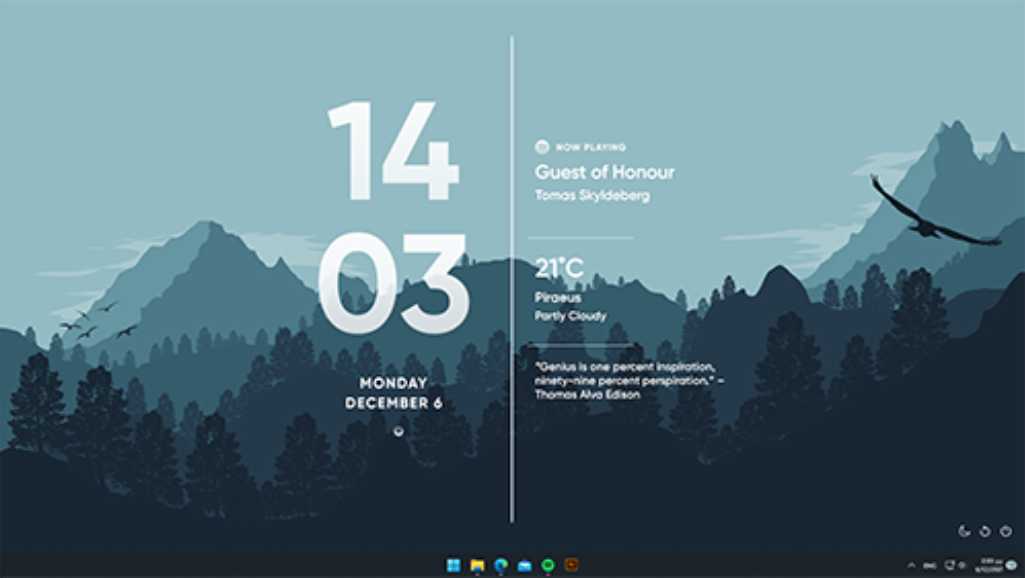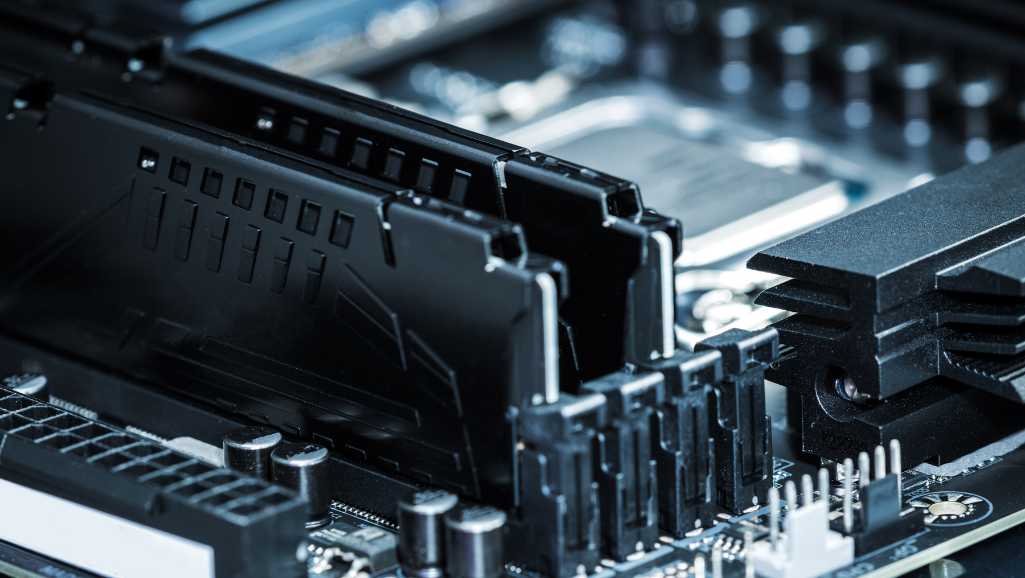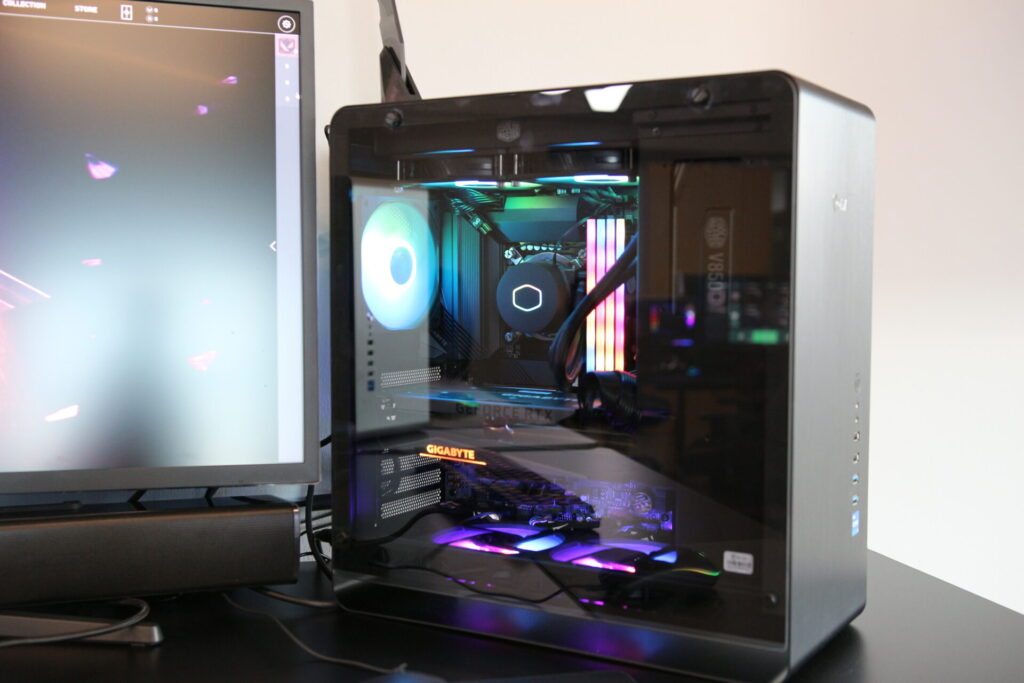Mini-ITX form factor has gained popularity in the gaming community for its compact size and powerful performance capabilities. This article explores the feasibility of using Mini-ITX for gaming, analyzing its advantages, limitations, and performance compared to traditional ATX builds. Additionally, we delve into the future trends of gaming with Mini-ITX systems and provide insights on optimizing and enhancing the gaming experience in a small form factor setup.
Key Takeaways
- Mini-ITX form factor offers a compact and space-saving solution for gaming setups.
- Choosing the right components is crucial for building a high-performance Mini-ITX gaming PC.
- Cooling solutions play a significant role in maintaining thermal performance in compact spaces.
- Mini-ITX systems can deliver competitive gaming performance compared to larger form factors like ATX builds.
- Optimizing Mini-ITX gaming systems involves considerations such as overclocking, thermal management, and storage solutions.
Understanding Mini-ITX for Gaming

What is Mini-ITX?
Mini-ITX is a motherboard form factor known for its compact size, typically measuring 170mm x 170mm. This small footprint makes it an ideal choice for building space-efficient gaming PCs without compromising on power. Mini-ITX motherboards are designed to support standard desktop components, allowing gamers to equip their systems with high-performance processors, memory, and graphics cards.
The form factor’s popularity among gamers has led to a wide range of Mini-ITX motherboards tailored for gaming. For instance, the Asus ROG Strix Z790-I Gaming WiFi and MSI MPG Z790I Edge are among the best Mini-ITX motherboards for 2024, offering advanced features like Wi-Fi 6E and robust power delivery systems for overclocking.
Mini-ITX systems are not just about saving space; they embody the essence of innovation in the gaming world, pushing the boundaries of what’s possible in a compact form.
Despite their size, Mini-ITX motherboards can pack a serious punch, but they do come with some inherent limitations. These include fewer expansion slots and sometimes less robust cooling solutions compared to their larger ATX counterparts. However, with careful component selection and system design, these limitations can be mitigated to create a powerful gaming rig that takes up minimal desk space.
Advantages of Mini-ITX for Gaming
The Mini-ITX form factor brings a host of benefits to the gaming world. Compactness is a significant advantage, allowing gamers to build smaller, more portable systems that fit easily into limited spaces. This is particularly appealing for those who attend LAN parties or have constrained desk areas.
Another key benefit is the lower power consumption of Mini-ITX motherboards. They are designed to be efficient, which can lead to quieter operation due to less heat generation and, consequently, less need for aggressive cooling solutions. This efficiency does not come at the cost of performance; Mini-ITX boards can support high-end CPUs and GPUs, making them capable of running the latest games smoothly.
Support for compact cases is also a notable advantage. These cases are not only space-saving but also often come with unique designs that appeal to gamers looking to personalize their setup. Despite their size, many Mini-ITX cases can still accommodate powerful components and adequate cooling systems.
The Mini-ITX platform offers a balance of size, power, and aesthetics, making it an increasingly popular choice among gaming enthusiasts.
Limitations of Mini-ITX for Gaming
While Mini-ITX systems are celebrated for their compact size and portability, they come with inherent limitations that can affect gaming performance. Limited upgradability is a significant concern; the small form factor means fewer slots for components, which can restrict future hardware enhancements. This is particularly problematic as games evolve to demand more powerful hardware.
Another drawback is the potential for higher temperatures due to the cramped interior. Efficient cooling is more challenging to achieve in a Mini-ITX case, which can lead to thermal throttling and reduced performance under load. Additionally, Mini-ITX motherboards typically support only two RAM slots, limiting memory expansion.
Despite these challenges, many gamers find that the benefits of a smaller footprint outweigh the limitations, especially when considering the advancements in compact, high-performance components.
Finally, the cost of Mini-ITX components can be higher compared to standard ATX parts. This price premium is often due to the specialized design and lower production volumes of Mini-ITX hardware.
Building a Mini-ITX Gaming PC
Choosing the Right Components
When building a Mini-ITX gaming PC, selecting the right components is crucial for achieving the best performance within the compact form factor. Motherboard compatibility is the cornerstone of a Mini-ITX build, ensuring that all other components fit and function properly. It’s essential to choose a high-quality power supply unit (PSU) as well, as a poor PSU can lead to system instability or, worse, damage other components. As highlighted in a snippet, never buy a poor PSU; a cheap one can die and take other components with it.
For the processor and graphics card, prioritize efficiency and thermal performance to maintain optimal temperatures in a small enclosure. Storage solutions should balance speed with capacity, considering both solid-state drives (SSDs) for fast load times and hard disk drives (HDDs) for larger game libraries.
The first thing to consider is your wattage. Select a PSU that exceeds your PC’s needs to ensure a stable and reliable power supply.
Finally, memory should be high-speed and low-profile to fit the compact space without compromising on performance. Here’s a quick checklist for component selection:
- High-quality, compatible Mini-ITX motherboard
- Efficient CPU with good thermal characteristics
- High-performance, compact GPU
- Reliable PSU with adequate wattage
- Fast SSD for the operating system and frequently played games
- Additional HDD for extended storage
- Low-profile, high-speed RAM
Cooling Solutions for Compact Spaces
In the realm of Mini-ITX gaming builds, efficient cooling is paramount, especially given the confined spaces. Choosing the right cooling solution is critical to maintain optimal temperatures and ensure the longevity of components. Air cooling options, while more common, may be limited by the size of the case. Conversely, liquid cooling systems can offer superior cooling performance but require careful planning to fit within the compact dimensions.
When selecting a case for a Mini-ITX build, it’s important to consider the airflow and space for cooling components. Some of the best Mini-ITX cases for 2024 that facilitate good cooling solutions include the Lian Li Q58, Fractal Design Terra, and the Cooler Master NR200P Max. These cases are designed to maximize airflow and accommodate various cooling systems.
- Air Cooling: Typically includes compact heatsinks and low-profile fans.
- Liquid Cooling: Involves closed-loop coolers or custom loops, often preferred for their efficiency in tight spaces.
- Passive Cooling: Relies on heatsinks alone, suitable for builds with lower power consumption.
The key to effective cooling in a Mini-ITX gaming PC is not just the choice of cooler, but also the layout and design of the case itself. A well-designed case can significantly enhance airflow and cooling efficiency, even in the most compact of builds.
Power Supply Considerations
When building a Mini-ITX gaming PC, the choice of power supply unit (PSU) is critical due to the limited space and potential for high power demands. Selecting the right PSU is essential for system stability and longevity. It’s important to consider the wattage, efficiency rating, and physical size to ensure compatibility with the Mini-ITX case.
The power supply is a crucial component in your PC, but it can be a little confusing. Here’s how to pick the best one for your needs.
For Mini-ITX builds, modular PSUs can be a game-changer as they allow for better cable management, which is vital in a compact space. Additionally, opting for a PSU with an 80 Plus certification can lead to more efficient power consumption and reduced heat output. Below is a list of considerations to keep in mind:
- Wattage requirements based on components
- Efficiency rating (80 Plus Bronze, Silver, Gold, Platinum, or Titanium)
- Physical dimensions to fit the Mini-ITX case
- Modular vs non-modular cables
- Quality and reliability of the PSU brand

Performance Comparison
Mini-ITX vs. ATX Gaming Builds
When comparing Mini-ITX to ATX gaming builds, the differences go beyond mere size. ATX builds offer more expansion slots and greater flexibility, while Mini-ITX systems are designed for space efficiency and portability.
- ATX Gaming Builds:
- Multiple PCIe slots for graphics cards and other expansions.
- Easier to cool due to larger case volume.
- Typically more drive bays and memory slots.
- Mini-ITX Gaming Builds:
- Limited to one PCIe slot, restricting multi-GPU setups.
- Compact design can challenge cooling solutions.
- Fewer drive bays and memory slots, prioritizing minimalism.
The choice between Mini-ITX and ATX ultimately depends on the user’s priorities. If space-saving and portability are key, Mini-ITX shines. However, for those who value upgradeability and peak performance, ATX is the go-to option.
While ATX systems may have an edge in raw expansion potential, Mini-ITX platforms have made significant strides in performance, often matching their larger counterparts in gaming prowess. The decision hinges on whether the user values compactness or expandability more in their gaming experience.
Impact of Form Factor on Performance
The form factor of a PC case is a critical aspect that can influence the overall performance of a gaming system. Choosing the right PC case is not just about aesthetics; it affects cooling efficiency, component compatibility, and ultimately, the gaming experience. Mini-ITX systems, due to their compact size, require meticulous selection of components to ensure they fit and function optimally within the limited space.
- Cooling Efficiency: Smaller cases often have less room for airflow, which can lead to higher temperatures and potential thermal throttling.
- Component Compatibility: Not all high-performance parts are available in sizes suitable for Mini-ITX, which may limit upgrade options.
- Cable Management: With limited space, managing cables can be challenging, impacting airflow and system cleanliness.
The importance of choosing the right PC case cannot be overstated. It is a balance between form and function that can make or break the gaming experience.
While Mini-ITX builds can deliver impressive performance, they often require more planning and consideration compared to larger form factors. The table below illustrates some of the performance aspects affected by the form factor:
| Aspect | Mini-ITX Impact | Larger Form Factor Impact |
|---|---|---|
| Cooling Potential | Limited by size; may require custom solutions | Ample space for air or liquid cooling |
| Component Selection | Restricted by case dimensions | Wide range of compatible components |
| Upgradability | May be constrained by space | Generally easier to upgrade components |
In conclusion, while Mini-ITX can be a viable option for gaming, it is essential to understand the trade-offs involved. The right case can enhance performance, but the limitations of a small form factor must be carefully managed to ensure a smooth gaming experience.
Real-World Gaming Benchmarks
When it comes to gaming, real-world performance is the ultimate test for any system, and Mini-ITX builds are no exception. Benchmarking results often reveal that Mini-ITX systems can hold their own against larger builds, especially when equipped with high-end components. Below is a succinct comparison of gaming benchmarks between Mini-ITX and standard ATX systems.
| Game Title | Mini-ITX FPS | ATX FPS |
|---|---|---|
| Game A | 110 | 115 |
| Game B | 90 | 95 |
| Game C | 120 | 125 |
These figures illustrate that while there is a slight performance gap, it is often negligible, particularly in the context of actual gameplay where the difference may not be perceptible to the user.
The compact nature of Mini-ITX systems does not significantly compromise gaming performance, making them a viable option for gamers who value space efficiency and portability.
However, it’s important to note that thermal constraints and potential bottlenecks due to smaller form factor components can impact performance under prolonged heavy loads. Users should consider these factors when evaluating Mini-ITX systems for gaming.
The Future of Gaming with Mini-ITX
Emerging Technologies and Mini-ITX
The landscape of Mini-ITX gaming is being transformed by the advent of emerging technologies such as edge computing and AI. These innovations are not just reshaping the gaming industry but are also making their way into the compact form factor of Mini-ITX systems.
Edge computing brings processing power closer to the user, significantly reducing latency. This is particularly beneficial for gaming, where real-time performance is crucial. AI integration at the edge further enhances this by allowing for more complex computations without the need for constant cloud connectivity.
The synergy between Mini-ITX and emerging technologies like edge AI and quantum computing applications promises to unlock new levels of efficiency and performance in gaming.
Quantum computing, although still in its nascent stages, offers a glimpse into the future where game complexity and real-time simulations could leap forward. As these technologies mature, they could provide Mini-ITX systems with unprecedented computational capabilities.
- Edge Computing: Reducing latency for real-time gaming
- AI at the Edge: Enabling local complex computations
- Quantum Computing: Potential to revolutionize game complexity
Innovations in Compact Gaming Systems
The landscape of compact gaming systems is rapidly evolving, with innovations that redefine portability and performance. Edge computing and AI are at the forefront, enabling devices to handle complex computations with remarkable efficiency. This shift is not only about power but also about the potential for new gaming experiences.
- Edge Computing: Reduces latency, enhances real-time decision-making.
- AI Integration: Allows for advanced algorithms and smarter gameplay.
- Quantum Computing: Promises unprecedented computational speed.
The synergy between compact gaming systems and emerging technologies suggests a future where gaming is more immersive, intelligent, and accessible than ever before.
The Best Handheld Gaming Consoles from WIRED highlight the ongoing trend towards powerful yet portable gaming devices. As the technology matures, we can expect to see Mini-ITX systems leveraging these advancements to deliver top-tier gaming experiences in a fraction of the space.
How Mini-ITX Could Shape Gaming Trends
The compact nature of Mini-ITX systems is not just a space-saving feature; it’s a catalyst for innovation in gaming. As technology progresses, Mini-ITX could lead to more portable and accessible high-performance gaming solutions, making it easier for gamers to set up and play anywhere.
- Edge Computing and AI: Mini-ITX’s small form factor is ideal for edge computing applications, allowing gamers to benefit from lower latency and more responsive AI in games.
- Quantum Computing: As quantum computing becomes more accessible, Mini-ITX systems could be at the forefront of integrating this technology, offering unprecedented computational power for complex simulations.
- Smart Cities and Autonomous Vehicles: Gaming simulations involving smart cities and autonomous vehicles could be enhanced by Mini-ITX’s ability to integrate and process data from various sensors and IoT devices.
The synergy between Mini-ITX form factor and emerging technologies suggests a future where gaming is more immersive, intelligent, and interconnected than ever before.
The implications for gaming are profound, with potential shifts in how games are developed, played, and experienced. Mini-ITX could very well be at the heart of these transformations, pushing the boundaries of what is possible in the gaming world.

Case Studies: Mini-ITX Gaming Setups
Professional Gamers and Streamers
The Mini-ITX form factor has found a unique niche among professional gamers and streamers who prioritize space efficiency and portability. Their setups often showcase the capabilities of Mini-ITX builds to deliver top-tier performance in a compact package.
- Streamer ‘A’: Custom water-cooled Mini-ITX build, achieving high frame rates in competitive games.
- Gamer ‘B’: Portable Mini-ITX system for LAN parties, with no compromise on graphics quality.
- Streamer ‘C’: Dual-system streaming setup, using a Mini-ITX PC for encoding, demonstrating the versatility of small form factors.
The appeal of Mini-ITX systems for this demographic lies in their ability to fit into tight spaces and be easily transported to events, all while offering the power needed for high-quality gaming and streaming. This has led to a growing trend where the compact size does not equate to reduced capabilities, but rather a testament to the ingenuity of modern PC building.
Enthusiast Community Builds
The enthusiast community for Mini-ITX gaming systems is vibrant and resourceful, often sharing detailed build logs and performance insights. Members take pride in optimizing every aspect of their compact systems, from selecting high-performance components to devising innovative cooling solutions. The shared knowledge within these communities is invaluable, especially when making decisions about components that best suit the Mini-ITX form factor.
- Help Choosing Between 2 Different CPU’s for Mini Itx build: Forum discussions often revolve around component selection, with threads like this providing a platform for collective expertise. Users compare notes on the latest hardware, such as the debate between the 13900hx and desktop CPUs.
The spirit of collaboration and experimentation within the Mini-ITX community pushes the boundaries of what’s possible in small form factor gaming.
Enthusiasts also contribute to a wealth of user-generated content, including guides, mod showcases, and reviews, which serve as a beacon for newcomers and veterans alike. The community’s commitment to sharing and support makes the Mini-ITX gaming experience more accessible and enjoyable for all.
Performance Reviews and User Experiences
User experiences and performance reviews are pivotal in assessing the real-world capabilities of Mini-ITX gaming systems. Enthusiasts often share detailed feedback on various platforms, highlighting the strengths and weaknesses of their compact builds. A common theme is the satisfaction with the space-saving design, allowing for a powerful gaming setup in a minimal footprint.
The best mini-ITX motherboards facilitate top-tier gaming experiences, even in budget-conscious builds.
However, some users report challenges with heat management and upgradability due to the constrained space. These insights are invaluable for prospective builders, as they underscore the importance of careful component selection and cooling strategies.
Below is a summary of user sentiments gathered from popular tech forums:
- Space-saving design highly appreciated
- Performance on par with larger systems
- Heat management requires attention
- Upgradability can be limited
Optimizing Mini-ITX Gaming Systems
Overclocking in a Small Form Factor
Overclocking, the practice of pushing a computer component beyond its factory-set limits, can be particularly challenging in a Mini-ITX build due to the limited space and potential for heat buildup. Choosing the right motherboard is crucial, as it must support overclocking while fitting within the compact dimensions of a Mini-ITX case. For instance, the ASUS ROG Strix X670E-I is renowned for its overclocking capabilities within the Mini-ITX form factor.
When overclocking in a Mini-ITX system, it’s essential to balance performance gains with the thermal constraints of a smaller enclosure. This often means investing in premium cooling solutions and carefully monitoring temperatures to prevent hardware damage.
Here are some key considerations for successful overclocking in a Mini-ITX setup:
- Select a motherboard with robust power delivery and overclocking support.
- Opt for high-performance, low-profile cooling systems.
- Ensure adequate airflow within the case to dissipate heat.
- Regularly check system stability and temperatures during and after overclocking sessions.
Enhancing Thermal Performance
In the realm of Mini-ITX gaming systems, enhancing thermal performance is crucial for maintaining system stability and longevity. The compact nature of Mini-ITX cases often leads to restricted airflow, making efficient cooling solutions a top priority for gamers and builders alike.
To address these challenges, several strategies can be employed:
- Utilizing high-performance, low-profile CPU coolers to maximize space and cooling efficiency.
- Incorporating case fans that are optimized for static pressure to push air through tight spaces.
- Implementing custom water cooling loops, which can be more effective in transferring heat away from components.
One notable example of a high-performance Mini-ITX build is the 8Pack Frame R8i, which integrates medical grade water cooling within a wall-mounted chassis for exceptional thermal management. This approach not only enhances the aesthetics but also significantly improves the cooling capabilities of the system.
While the initial investment in advanced cooling solutions may be higher, the payoff in terms of performance and component longevity cannot be overstated. Ensuring that your Mini-ITX gaming rig remains cool under pressure is a testament to thoughtful design and a commitment to quality gaming experiences.
Storage Solutions for Limited Spaces
In the realm of Mini-ITX gaming systems, efficient use of space is paramount, especially when it comes to storage. Traditional hard drives are often too bulky, leading many to opt for solid-state drives (SSDs) that offer high performance in a compact form factor. M.2 SSDs, in particular, are a popular choice as they can be mounted directly onto the motherboard, saving precious space.
For gamers requiring more storage, utilizing a combination of onboard M.2 slots and external storage solutions is a viable strategy. The QWXOSR Storage Bag, for instance, is an ideal solution for carrying additional external drives and accessories, ensuring that space constraints do not limit the gaming experience.
While internal storage options are limited, the use of external storage accessories can greatly expand the capacity without compromising the system’s compact design.
Ultimately, the key is to balance storage capacity with the physical limitations of the Mini-ITX form factor, ensuring that the gaming rig remains both powerful and portable.
The Role of Edge Computing and AI in Gaming
Improving Game Streaming Services
With the advent of edge computing and AI, game streaming services are poised to undergo significant enhancements. Edge computing reduces latency by processing data closer to the user, which is crucial for a seamless streaming experience. AI algorithms can optimize network routes and manage bandwidth more efficiently, ensuring stable and high-quality streams even during peak hours.
- Latency Reduction: Edge servers process data near users, decreasing lag.
- Bandwidth Management: AI optimizes network traffic to prevent buffering.
- Quality of Service: Adaptive streaming adjusts to real-time network conditions.
- User Experience: Personalized content and interactive features tailored by AI.
The integration of edge computing and AI not only improves the technical aspects of game streaming but also opens up new possibilities for interactive and personalized gaming experiences. This could redefine the way games are consumed and enjoyed by audiences worldwide.
AI-Driven Game Development on Mini-ITX
The integration of AI into game development on Mini-ITX platforms is transforming the landscape of gaming. Edge computing and AI technologies enable developers to create more immersive and intelligent gaming experiences. By processing complex computations locally, Mini-ITX systems can offer enhanced efficiency and scalability, crucial for AI-driven games.
The compact form factor of Mini-ITX is no longer a barrier to advanced game development; instead, it becomes a catalyst for innovation and creativity.
With the rise of AI-powered recommendation engines, Mini-ITX systems can also personalize gaming experiences. These engines analyze player behavior and preferences to tailor game content, making each playthrough unique. The potential for AI in Mini-ITX gaming is further exemplified by industry leaders like MSI, who are set to showcase their AI-driven innovations at events such as CES 2024.
Enhancing Gaming Experience with Edge AI
Edge AI is transforming the gaming industry by bringing powerful artificial intelligence capabilities closer to the user, significantly reducing latency and enabling more immersive and responsive gaming experiences. By processing data on local devices, edge AI allows for quicker adaptation and decision-making, enhancing the realism and interactivity of games.
The integration of edge AI in gaming systems is not just about faster processing; it’s about creating a dynamic and evolving gameplay environment.
For example, non-player characters (NPCs) powered by edge AI can exhibit behaviors that adapt in real-time to the player’s actions, leading to more unpredictable and engaging encounters. This cutting-edge technology enables NPCs to learn from players’ actions, adapting their behavior in real-time. No longer are opponents merely following a set script; they are evolving adversaries that challenge even the most seasoned gamers.
Here are some of the key benefits of edge AI in gaming:
- Reduced latency for real-time interactions
- Enhanced personalization and player engagement
- Improved scalability for multiplayer games
- Greater potential for innovation in game design
Quantum Computing: A Future Ally for Gaming?
Potential Impacts on Game Complexity
The advent of quantum computing holds the promise of revolutionizing game complexity, offering unprecedented computational power to simulate intricate environments and AI behaviors. Quantum computing could enable games to feature more dynamic and responsive worlds, where every action has a multitude of consequences, creating a richer gaming experience.
- Enhanced AI: Quantum computing may lead to more sophisticated AI opponents, capable of learning and adapting in real-time.
- Complex Simulations: The ability to process vast amounts of data could result in more detailed and complex simulations.
- Richer Storytelling: With greater computational resources, narratives can become more intricate, with multiple branching paths.
The relationship between indie and AAA game development is complex, with each influencing the other. Quantum computing could further blur these lines, as both sectors strive to harness its potential.
While the full impact of quantum computing on game complexity is yet to be seen, it is clear that it will open new horizons for developers and players alike, pushing the boundaries of what is currently possible in digital storytelling and immersive environments.
Quantum Computing and Real-Time Simulations
The advent of quantum computing is poised to transform the gaming industry by enabling real-time simulations of unprecedented complexity and detail. Quantum computers may enable developers to simulate highly detailed environments and physics, providing gamers with a more authentic experience. This leap in computational capability could lead to the creation of virtual worlds that are indistinguishable from reality, where every element behaves according to quantum mechanics.
The potential of quantum computing in gaming extends beyond visual fidelity. It promises to enhance AI behaviors and decision-making processes, making in-game characters and ecosystems more dynamic and responsive.
Faster processing speeds and the ability to handle complex calculations in real-time will also allow for more immersive and interactive gaming experiences. As quantum computing continues to evolve, we can expect to see games that offer not just stories or entertainment, but also serve as platforms for scientific exploration and education.
The Road Ahead for Gaming and Quantum Computing
The intersection of gaming and quantum computing is poised to unlock new frontiers in game complexity and realism. Quantum computing’s potential to process vast amounts of data could lead to more intricate game worlds and AI behaviors, enhancing the player’s immersive experience. As quantum technology evolves, we may see cloud-based quantum computing services become more accessible, allowing game developers to tap into this power without the prohibitive costs of owning quantum hardware.
The future of gaming with quantum computing is not just about raw computational power, but also about the novel algorithms that can redefine what games are capable of.
While the full integration of quantum computing into gaming is still on the horizon, the anticipation grows as we consider the possibilities:
- Advanced physics simulations for more realistic environments
- Complex AI that can learn and adapt in real-time
- New genres of games that leverage quantum mechanics
The road ahead is filled with potential, and as the technology matures, the gaming industry will undoubtedly explore innovative ways to harness quantum computing power.
Conclusion: The Viability of Mini-ITX for Gaming
Summarizing the Pros and Cons
The Mini-ITX form factor has carved out a niche in the gaming world, offering a unique blend of compactness and capability. Pros include the small footprint, which allows for easier portability and a minimalist setup, and the potential for a quieter system due to fewer components generating noise. However, the Mini-ITX platform is not without its challenges.
The main concern with Mini-ITX builds is cooling. The reduced space can limit airflow and the size of cooling solutions, which is critical for maintaining performance under load.
On the other hand, advancements in technology have led to more efficient components that generate less heat, somewhat mitigating this issue. The table below succinctly captures the key advantages and limitations of Mini-ITX systems for gaming:
| Pros | Cons |
|---|---|
| Small footprint | Limited cooling options |
| Portability | Restricted component selection |
| Potential for quieter operation | Higher cost per performance ratio |
In conclusion, while Mini-ITX systems offer an attractive proposition for gamers looking for a compact and sleek setup, they require careful consideration of components and cooling strategies to ensure a smooth gaming experience.
Future Outlook for Mini-ITX in Gaming
The future outlook for Mini-ITX in gaming is intertwined with the broader trends in digital transformation and emerging technologies. As edge computing and AI continue to evolve, Mini-ITX systems may benefit from reduced latency and enhanced real-time performance, crucial for gaming applications.
The integration of advanced technologies into Mini-ITX platforms could redefine the gaming experience, offering more power in smaller packages.
Looking ahead, we can anticipate several developments that may influence Mini-ITX gaming setups:
- Innovations in cooling solutions to manage heat in compact spaces more effectively.
- Improved power supply units that are both smaller and more efficient.
- Advancements in storage technology, providing faster and larger capacity options suitable for Mini-ITX cases.
The trajectory for Mini-ITX in gaming is promising, with the potential to push the boundaries of what’s possible in compact gaming rigs. As technology progresses, the Mini-ITX form factor could become even more appealing to gamers who value space efficiency without compromising on performance.
Final Thoughts on Compact Gaming Solutions
As we reflect on the journey of Mini-ITX in the gaming world, it’s clear that this compact form factor has carved out a significant niche. The adaptability and portability of Mini-ITX systems have proven to be a game-changer for many gamers, especially those with limited space or a penchant for gaming on the go.
The Mini-ITX platform, with its continuous evolution, stands as a testament to the ingenuity of modern PC building. Its ability to integrate with emerging technologies and adapt to new gaming trends is nothing short of remarkable.
While the Mini-ITX form factor may come with certain constraints, the community has shown incredible creativity in overcoming these challenges. From the use of foldable keyboards and flat traveling mice to the integration of edge computing and AI, the possibilities seem to be expanding with each passing year.
In conclusion, Mini-ITX systems offer a viable and exciting option for gamers looking to maximize space without compromising on performance. As technology advances, we can only anticipate further innovations that will enhance the Mini-ITX gaming experience.
Frequently Asked Questions
Can Mini-ITX gaming PCs support high-end graphics cards for gaming?
Yes, Mini-ITX gaming PCs can support high-end graphics cards, but the size constraints may limit the options compared to larger form factors.
Is Mini-ITX suitable for overclocking and pushing performance limits in gaming?
Mini-ITX systems can be overclocked, but users should consider the compact space and cooling solutions to maintain stability and performance.
What are the key advantages of choosing Mini-ITX for gaming builds?
Advantages include portability, space-saving design, and the ability to build a powerful gaming system in a compact form factor.
How do Mini-ITX gaming PCs compare to larger form factors like ATX in terms of performance?
While Mini-ITX systems can offer comparable performance to larger form factors, the limited space may require careful component selection and cooling solutions.
Are there any specific limitations or challenges when building a Mini-ITX gaming PC?
Challenges may include limited space for components, potential thermal issues, and compatibility constraints with certain hardware configurations.
Can Mini-ITX gaming setups accommodate multiple storage drives and peripherals?
Yes, Mini-ITX motherboards typically support multiple storage drives and peripherals, but users should consider space constraints when planning the build.
What are the emerging technologies that could enhance the gaming experience on Mini-ITX systems?
Emerging technologies such as edge computing and AI-driven enhancements could improve gaming performance, efficiency, and overall experience on Mini-ITX setups.
How can users optimize thermal performance and cooling in Mini-ITX gaming systems?
Optimizing thermal performance may involve selecting efficient cooling solutions, managing airflow within the compact case, and considering the placement of components for heat dissipation.
Gamers in Singapore! Are you itching to unleash the ultimate gaming experience but unsure whether a Mini ATX PC is the right fit for your custom build? Look no further than Volta PC, your one-stop shop for expert guidance and top-notch PC building!
Don’t let the compact size of Mini ATX fool you. It packs a serious punch, but it’s not always the perfect choice for every gamer. Wondering if it aligns with your performance needs and budget? Volta PC’s experienced consultants are here to demystify the world of PC form factors. They’ll help you weigh the pros and cons of Mini ATX against other options like Mid Tower or even Full Tower, considering your specific game preferences, thermal management needs, and future upgradeability desires.
Stop struggling with online guides and conflicting information. Volta PC offers personalized consultations, ensuring you walk away with a build that exceeds your expectations. Contact Volta PC today and unlock the power of a custom gaming PC that perfectly matches your gameplay and budget! Remember, the right form factor is key to maximizing your gaming potential, and Volta PC has the expertise to guide you there. Don’t wait, contact them now and start dominating the competition!
Follow Us on Social Media
How to Choose a New Gaming Laptop
When you decide to buy a new gaming laptop, it feels like you’re setting out…
What to Know Before Purchasing a Mini Gaming Computer
In recent years, the popularity of the mini gaming computer has surged. Designed for both…
How To Custom Your Desktop With Rainmeter
Welcome to the world of custom desktop! If you’re looking to elevate your computer’s interface…
Choosing the Best i7 Processor for Your Custom Gaming PC
The processor is arguably the most important piece of a powerful PC when it comes…
Why Is Your Gaming Computer Using 40-50% of RAM While Idle?
In the world of high-performance computing, especially when it comes to gaming computers, RAM (Random…
Gaming PC: How To Fix Frame Drops Due To Low CPU/GPU Usage
Many PC gamers have frame drops. They have them despite having a high-performance PC. This…









